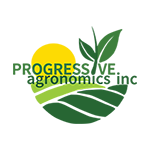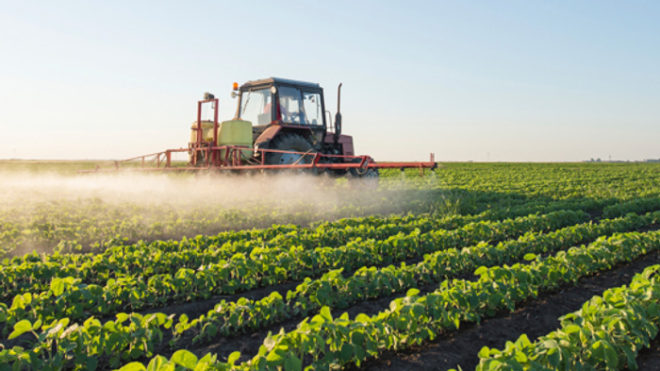While the focus among farmers right now is getting the crop planted and established, soon there will be decisions to make about keeping the crop healthy for the duration of the growing season. One of the primary tools available in maintaining plant health is fungicide, and while fungicide use is common and widespread across the corn belt, the decision on whether to spray and when to spray can be one of the more difficult management decisions a farmer must make.
Practical Farm Research (PRF) Results
Beck’s has spent a significant amount of time, effort, and plot space evaluating fungicide performance. In corn, three fungicides have earned PFR Proven™ status, averaging a 9.4 Bu./A. yield increase and a return on investment (ROI) of $16.85/A. when applied at VT (tassel). Four fungicides in soybeans are PFR Proven, averaging a yield gain of 3.7 Bu./A. and $17.51 ROI when applied at R3 (beginning pod). And even in wheat, Beck’s has designated two fungicides as PFR Proven, gaining 6.2 Bu./A. and $18.07 in ROI per acre when applied at Feekes 10.5 (flowering).
Despite these promising results, the decision of whether to spray a fungicide is still difficult. BASF recently conducted a survey of farmers and found that while 90% of farmers have used a fungicide since 2005, only 40% of farmers are currently using fungicides. This could be due to lower grain prices, tighter crop input budgets, or a personal experience where a fungicide application didn’t result in increased yield. While these challenges can certainly erode confidence in a fungicide’s ability to perform, weather analysis tools can provide valuable insights to help farmers make confident decisions on whether or not to spray a fungicide.
Sporecaster: White Mold in Soybeans
In northern areas of soybean production, sclerotinia stem rot, more commonly known as white mold, can be a devastating disease. Cool, damp conditions during and after flowering allow white mold to thrive and severely reduce yield. While PFR data suggests that the best time to spray a fungicide on soybeans is at R3, that is too late to protect soybeans against white mold.
The fungus overwinters as sclerotia (small, hard, black structures left in the soil from a previous infected soybean crop). Under cool, moist conditions, these sclerotia will produce apothecia, which are mushroom-shaped bodies that can release millions of spores daily. If these spores reach a soybean plant and land on flowers that have senesced (matured and turned brown), they will colonize the decaying flowers and soon spread into the healthy tissues of the soybean plant. By the time the plant reaches the R3 growth stage, it is already infected internally, and fungicides are ineffective, But an application at R1 (beginning flower) can potentially kill the spores before they infect the plant.
Justifying an earlier fungicide application targeting a single disease can be difficult when it might seem to make more sense to wait until the R3 growth stage when the data suggests a much better chance of a positive ROI. But with the severity of white mold being so dependent on weather conditions, the Sporecaster app from the University of Wisconsin can help analyze weather data to predict the likelihood that white mold will be a problem.
Sporecaster uses weather archives to evaluate past trends and near-term forecasts for each field location that you enter and gives a high, medium, or low risk rating for each field. As soybeans begin to flower, a farmer can check the app when flowers are first observed in the field. If the app produces a high rating, there is a good chance that a field with a history of white mold will respond to a fungicide application. If a medium rating is displayed, the app recommends checking again in a ew days, and a low rating indicates that fungicide likely won’t be needed.
While this is by no means a foolproof method of making decisions, it gives quick access to weather analysis to understand the potential of a white mold infection. When the decision needs to be made at the R1 growth stage, using all the information available at that time (history of white mold in the field, scouting, and weather data from an app like Sporecaster) can improve the provability that a fungicide decision will be made correctly. Information on Sporecaster can be found at https://ipcm.wisc.edu/apps/sporecaster/. The app is available for both Apple and Android devices.
Wheatscab: Head Scab in Wheat
Fusarium head blight in wheat, commonly known as head scab, can be problematic in not only causing yield loss, but also potentially producing vomitoxin, leading to severe price discounts and potential rejection of delivery at grain elevators. The infection occurs at flowering under wet, humid conditions. Many wheat producers have made a fungicide application at flowering a standard practice to specifically target this disease. However, with lower wheat prices, it may be tempting to look to eliminate this fungicide application to reduce costs, especially in fields where wheat yields may be limited due to poor drainage, a challenging winter, or other adverse conditions.
Wheatscab is an online tool that can help determine how much of a risk is assumed by not spraying. It was developed by Penn State University with the assistance of researchers at Ohio States University and Kansas State University. Like Sporecaster, it evaluates recent weather along with the near-term forecast to identify the wet, humid conditions favorable to the development of head scab, and provides a high, medium, or low risk rating. The Wheatscab tool can be found at http://www.wheatscab.psu.edu/.
While these weather analysis tools are no substitute for traditional methods of decision making like scouting and research trials, they can certainly help provide easy access to information that can improve confidence in making the right decision. As technology and data analytics continue to advance, more tools like this will become available to assist in decision making.
~ Mike Hannewald, CCA – Field Agronomist

